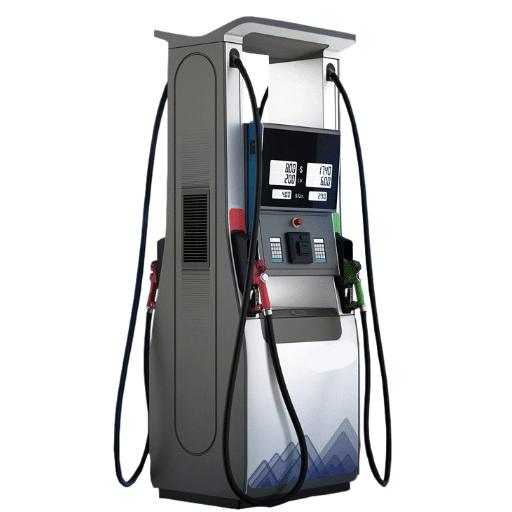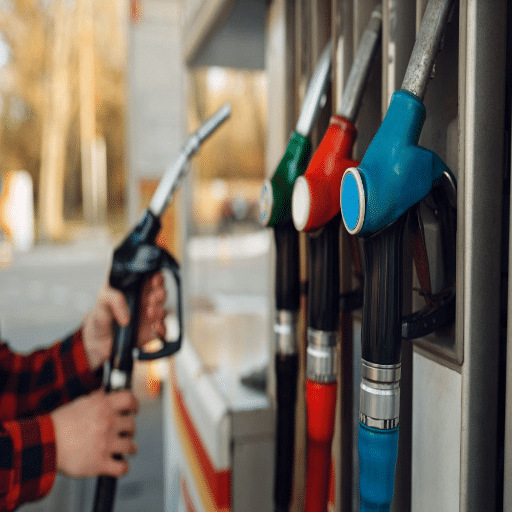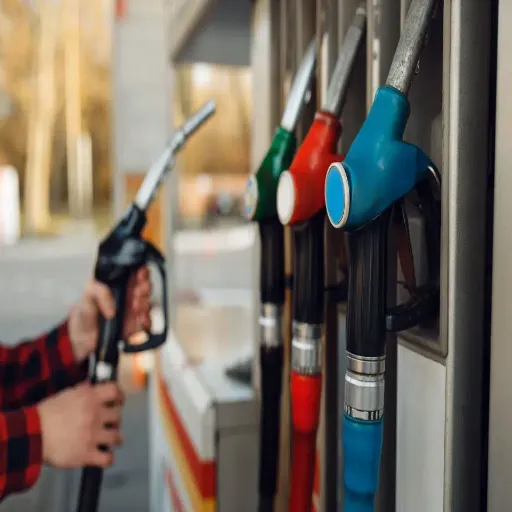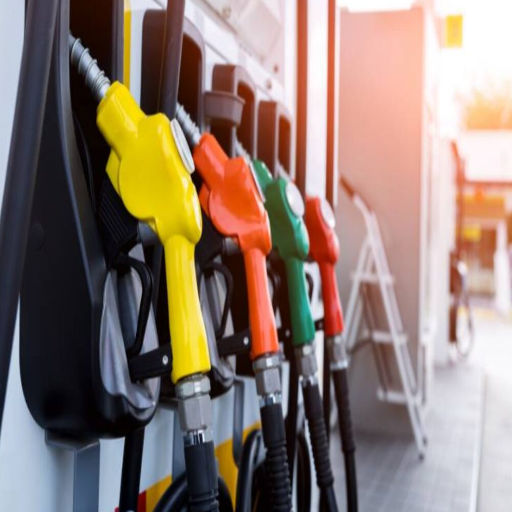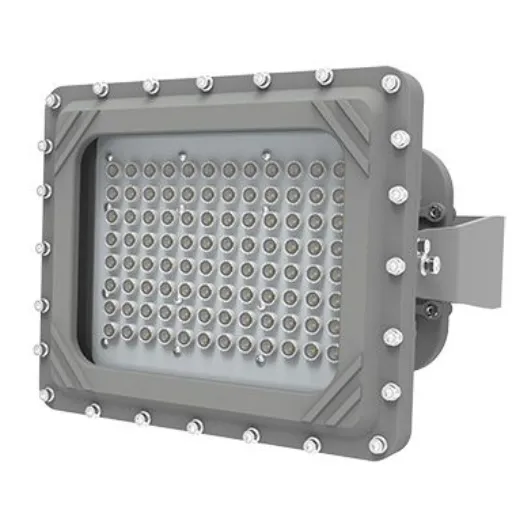A vital part of our daily comings and goings almost goes unnoticed when contemplating the design details of a gas station. Nearly every gas station has one glaring feature, with the tall canopy, touched only by the occasional glare’s annoyance, its purpose is rarely questioned. But you have thought it at least once, haven’t you? Gas station canopies stand through the years, working from giving alternate shelter against sun and rain to purely decorative purposes, which often go unnoticed by people. However, this article goes through several fascinating reasons that explain why these canopies exist and how they contribute to safety, branding, and, to some extent, your overall refueling experience. It is therefore time to read this article and discover how these towering structures unexpectedly assist the modern world.
Understanding the Canopy Structure
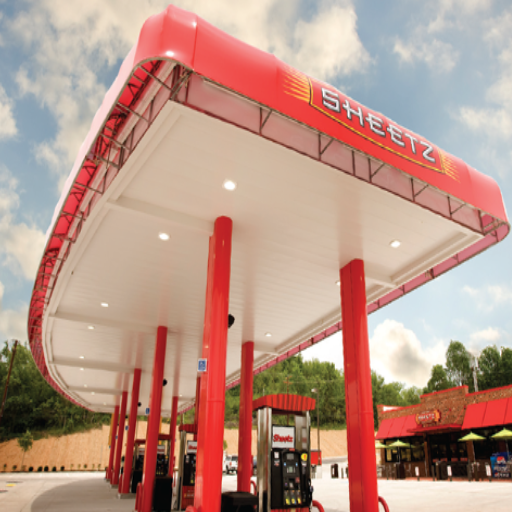
Typically, gas station canopies are designed for shelter and are intended to enhance safety. They protect customers and equipment from inclement weather, such as rain, snow, or excessive sunlight, providing a pleasant atmosphere while refueling. Canopies offer enhanced visibility with lighting systems for safety in the evening or during periods of low visibility. Additionally, they may further the identity of the gas station through their well-thought-out design, which features the system’s logo, colors, and promotional messages, thus making the station easily recognizable and attractive to passing motorists.
What is a Gas Station Canopy?
A gas station canopy is an overhead, structured shelter commonly erected over fuel dispensers at gas stations. Canopies fulfill their multiple purposes, conversely, with design consideration given to the functions or somewhat aesthetics. The primary goal is to shelter customers and fuel station equipment from adverse weather conditions that a customer would rather be shielded from, e.g., rain, snow, harsh winds, or intense sunshine.
Traditional gas station canopies are always constructed with durable options like steel, aluminum, or composite panels to guarantee long-life service and withstand environmental hazards. Lighting installations in canopies usually provide rain-lighting visibility for nighttime or bad weather, consequently guaranteeing better customer safety and operational efficiency.
From a design standpoint, canopies could also be a potent marketing tool. Customization could comprise the station’s logo, colors, and marketing messages, which, when credited with visibility from afar, would create a strong memory impression in the customer’s mind. The industry reports indicate that greater sales can be generated from the well-maintained and beautiful canopy, whereby more customers walk in and an improved user-level walking experience is also granted.
On top of this, canopies are now open to overt airbrushes of civil technology, such as LED lighting and solar panels, with various kinds of green considerations. These sorts of things reduce operating costs and continue to improve alignment of a business venture with numerous green initiatives, creating an attraction for green consumers. Standard designs come in various sizes and configurations befitting the layout of a station, the flow of vehicle traffic, and local regulations, further proving the versatility and importance of canopies within modern gas-station infrastructure.
Materials Used in Canopy Construction
The materials used in canopy construction are integral to quality assurance for ensuring durability, functionality, or aesthetic appeal. Steel is one of the most commonly used materials due to its strength and ability to sustain large structures. Steel framework structures are mostly treated with an anti-corrosion coat to prolong their life, particularly in extreme weather conditions. Aluminum is another choice, minor in weight and incapable of rusting, making it best suited for canopies in coastal or humid environments.
For roofing, galvanized steel, aluminum composite panel (ACP), or polycarbonate sheets offer a mixture of features balancing durability with design freedom. Being sturdy and cheap, galvanized steel sheets are probably the most common construction material. ACPs consist of two aluminum layers and a non-aluminum core bonded in between; this material is exquisite, light in weight, and resistant to corrosion. Polycarbonate sheets enable light transmission, converting the canopies into truly functional and nice-looking.
The canopy materials are coated with highly advanced protective finishes such as powder coatings and paints to resist weather and retain good looks. Also, top-quality sealants and adhesives seal and improve structural integrity against water leakage.
Material choice depends on regional climate, intended use, and budget considerations. For instance, in areas that experience a lot of snow, materials with an extremely high load-bearing capacity become essential. In contrast, reflective or insulating materials are preferred in hot climate conditions to prevent heat accumulation. These material developments in any way make contemporary gas station canopies measure up to practical and environmental needs efficiently.
Height and Design Considerations
Gas station canopies’ height and design must be factored into their real-world utility and possible hazards. Clearance heights of 4.5 to 5.5 m are standard in the industry to allow smooth traffic flow and accommodate various types of vehicles, including heavy, tall trucks and recreational vehicles.
Modern approaches support aerodynamic designs to hamper wind resistance, which can damage canopies in storms. Also, integrating LED lighting into these canopies for better illumination has become a fashionable alternative to electric lighting from an energy-saving and maintenance perspective. They are considering designing solar panels to harness renewable energy resources and push for further sustainability.
In addition, canopy designs are being rethought in terms of modular finishes for adaptability and ease of maintenance. Architects and engineers consider local building codes and environmental regulations when designing places for patient consumers.
The Role of Light in Gas Station Canopies
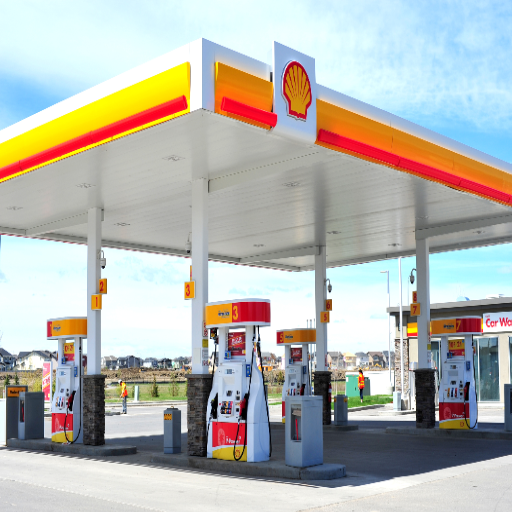
Lighting serves critical functions in gas station canopy constructions: illumination, safety, and a welcoming atmosphere for customers. Proper lighting also guarantees security by discouraging criminal activity, while fuel pumps and extra amenities become visible to drivers at night and during low visibility. Being very bright and offering long lifespans while being eco-friendly, LED lights are increasingly preferred. They are now a perfect tradeoff between excellent performance and lower energy consumption. Essentially, well-thought-out lighting enhances the overall look of the gas station, making it a pleasant experience for the users.
Illumination for Safety and Visibility
Modern gas station illumination systems grant visibility and ensure the principles of energy efficiency and environmental sustainability. Research proves LED lighting can save 75% of energy compared to conventional incandescent lighting, reducing running expenditures. An LED offers constant brightness and serves for 50,000-100,000 hours, resulting in less downtime for replacements and repairs.
By removing those dark corners where accidents or security perturbations may be bred, lighting systems operate to ensure safety. Canopy lighting, for instance, provides a level spread of brightness around the fuel pumps. In contrast, pathway and perimeter lights safeguard the walkways and parking areas because of the movement of individuals and vehicles. In comparison, motion-sensor lighting adjusts brightness based on activity and thus saves more energy while ensuring safety!” The further improvements underscore the increasing focus on merging functionality, sustainability, and safety criteria for gas station lighting systems.
Types of Lighting Used
Modern gas station lighting might have several types that suit different necessities while providing the best efficiency and safety. Among the options commonly chosen are LED lights, which are now the industry’s best standard due to their energy efficiency and lifespan. LED light fixtures save up to 70% in energy consumption versus conventional lighting, which might include metal halide or fluorescent lamps. In addition, LED lights offer better brightness, color rendering, and less maintenance.
Lighting for the canopy illuminates fuel pump areas for safe occupancy by drivers and attendants. These lights usually come inside a tough casing to resist weather conditions. High-power canopy LED lights producing 12,000-20,000 lumens give users clarity without depleting much energy.
Pathway and perimeter lights ensure sufficient illumination covering walkways, parking lots, and driveways, keeping pedestrians and customers safe. Some widely used fixtures include bollard lights and floodlights with integrated motion sensors or timers for enhanced operation. Now, designs emphasize anti-light pollution techniques: protect only the targeted zones with beams from falling outside.
Another innovative way would be to use motion sensor lights and adaptive controls to modulate brightness according to activities and traffic patterns. This would significantly enhance energy savings and further boost safety by automatically increasing the ambience during periods of high activity. Adaptive lighting installed with a real-time monitoring system would best facilitate operation cost management and sustainability goals for businesses.
With the advancement of technology and more energy-efficient solutions, gas station lighting can elevate visibility, safety, and environmental consciousness. Only through a conscious focus on advanced lighting types such as LEDs can businesses provide better ambiance and take a step towards cutting much energy.
Impact on Customer Experience
Good lighting is essential in providing a pleasant customer experience at the gas station. Studies show that illumination perceived as adequate ensures a perception of security, which decides whether a customer visits or comes to that location again. For example, increased brightness and the consistency of LED lighting build a feeling of security during nocturnal hours in such locations as fuel pumps or parking lots.
Moreover, poorly illuminated areas discouraged customers from lingering around, which can significantly contribute to convenience store sales. Another survey found that 67% of customers feel safer shopping in well-illuminated regions, which increases spending uncertainty while in such places. Besides that, using energy-efficient lighting like motion-sensing or dimmable LEDs will cut operational costs while concurrently representing the green commitment of the brand, which comes as a smile to the face of any environmentally conscious customer.
With the prioritization of fundamental lighting approaches, gas stations have become trusted places and improved their brand image. Their atmosphere welcomes customers into an experience that turns the mundane fueling stop into a positive memory for the customer.
Safety Features of Gas Station Canopies

Gas station canopies uphold customer safety and operational efficiency. Typical features include materials strong enough to endure adverse weather, proper lighting inside the canopy to deter accidents from poor visibility at night or in bad weather, and fire-resistant construction to lessen potential fire hazards associated with fuel. Drainage is often installed so water does not accumulate, and clear signage is installed to direct customers. These collectively provide a safe environment for customers and staff alike.
Protection from Weather Elements
Gas station canopies are designed to protect the customer, automobile, and operator from adverse weather. These canopies are typically made to withstand more intense solar rays, showers, snow, or even hail. In modern times, galvanized steel and rugged aluminum composites are often used with an eye toward durability, strength, and structurally resisting winds as high as 150 mph in hurricane-prone zones. Research has shown that incorporating UV-resistant coatings on the canopy surface can help reduce heat buildup by up to 30%, ensuring a comfortable environment during peak summer months.
Heavy rainfall warrants superior drainage systems in the canopy designs so that water does not pool around and endanger or significantly affect the function. Snow loads are also a significant concern in colder climates, with some canopies designed to sustain snow as heavy as 60 pounds per square foot. Aside from satisfying safety requirements, these optimizations make the building much more durable. With modern construction technologies and material innovations, gas station canopies extensively protect individuals and their vehicles from harsh weather, ensuring the customer is profiting from a safer and more efficient experience.
Fire Safety Considerations
Fire safety is a key element in the design of a gas station canopy. Also, the infrastructure should be constructed in such a way as to conform strictly to the safety standards that minimize any risks. Each modern gas station canopy is constructed with fire-resistant materials like aluminum or steel; these materials resist fire and retard flame propagation if an emergency does surface. Contrasting these are the fire suppression systems, automatically activated, such as sprinklers and foam-dispensing units, that aim to suppress fire as fast as possible. Hence, it never escalates into larger proportions.
According to the codes of practice, fire-resistant coatings further reinforce the canopy by granting it the property to withstand higher temperatures for longer. Also, proper venting and clearance designs allow for the safe dissipation of flammable fumes, decreasing the likelihood of ignition. Adequately spaced fuel dispensers that exhibit precise, visible emergency shut-off controls can further contribute to prompt firefighting actions. What fire safety research data reflects is that well-maintained suppression systems can reduce fire incidence cases by about 80%, therefore emphasizing the need for regular inspections and keeping to all safety guidelines in the operations of gas stations.
Signage and Emergency Protocols
Clear and consistent signage is a significant safety factor when guiding customers and employees during emergencies. Warning signs like “No Smoking,” “Turn Off Engine,” and “Flammable Materials” must be displayed in areas adjacent to fuel dispensers and storage to prevent hazards. These signs generally make people aware of necessary safety requirements near the highest-risk conditions.
Furthermore, signage and training should make emergency protocols known to employees. Examples include signage stating the location of a fire extinguisher, emergency shutoff controls, and evacuation points, all of which come in handy during emergencies to the very last minute. Recognized industry standards advocate for instructions regarding using safety equipment, such as fire blankets and spill kits, to be continuously posted near high-risk areas.
According to recent statistics, emergency events witness approximately half the time faster responses in establishments with a means of communicating emergencies, such as clear signs supported by employee preparedness programs, compared to those without. Thus, this speaks to the importance of clear signage alongside regular training and the evaluation of protocols to eliminate risks and ensure all on-site safety. This need is further justified as maintaining signs ensures that fading or damaged labels will be replaced on time, enhancing the safety-related processes’ overall efficacy.
Essential Functions of Canopies at Fuel Stations

A gas station canopy serves several key safety, convenience, and operational purposes. Mainly, they provide hiding areas from sporadic rain, sun, or snow for both the customer and equipment, thus creating a better and safer fueling environment. Illumination through the canopy will improve visibility and navigation within the station to the pump at night or in any low-visibility condition. From a branding perspective, however, this canopy is excellent as it gives a place for logos and signs to create a professional and recognizable brand image. In summary, fuel station canopies are needed for safety, operation, and convenience.
Enhancing Fuel Dispensing Efficiency
Fuel dispensing must be efficient to reduce wait time, maximize customer satisfaction, and improve operational performance at a fuel station. Modern-day technologies have enhanced fuel pumps with fast flow rates, multi-fuel dispenser capabilities, and an emphasis on accurate delivery and metering. High-speed dispensers pump fuel at 30 to 40 gallons a minute, which is especially beneficial for commercial vehicles with bigger tanks.
The suppliers have also implemented automated fuel systems with status indications to monitor fuel levels in real-time, ensuring replenishment occurs on time and without delay. The integration of contactless payments has simplified payments, reducing checkout times by 30%, according to recent reports from within the industry. Another distraction-free way to enable fuel payments and loyalty rewards involves self-service kiosks and mobile-app connectivity.
Advanced analytics helps fuel stations allocate dispensers based on demand during peak hours, substantially improving throughput. These modern approaches make fuel dispensing more efficient, accurate, and customer-oriented—essential attributes of service excellence in the energy sector.
Marketing and Branding Opportunities
To briefly answer the question, I regard marketing and branding potential through tailored loyalty regimens and innovative customer experience. By emphasizing analytics and next-generation payment interfaces that we implement, we could associate our brand with being the energy industry’s most straightforward and efficient option. This builds further customer trust and differentiates us in an otherwise competitive market.
Canopies as a Shelter for Customers
Modern canopies at fueling stations or service areas act as rain shields and enhance customer experience. Studies reveal that properly designed canopies can enhance customer satisfaction by 30% because they create a comfortable and safe environment during rain, intense sunlight, or snow. A further advantage includes maintenance savings that can be afforded by durable and energy-efficient canopy materials, such as polycarbonate and aluminum, which are known to become less expensive by about 20% with time compared to traditional materials.
Solar panels are being installed on the canopies to maximize performance. These canopies ultimately fulfill sustainability objectives by minimizing carbon emissions and lowering energy expenses considerably (some claim by almost 40%). Further advantages include bright lighting for canopies- the LED light equipped with a motion sensor- that gives better night visibility and slashes energy consumption by 60%-80%.
Being useful, environmentally friendly, and modernly beautiful, they are an irreplaceable asset in uplifting the world-class customer experience and conforming to the sustainability movement on a global scale.
Design and Structure of Gas Station Canopies

The gas station canopy is an architectural design element that provides shelter and assurance while maintaining durability and usefulness. There are steel and aluminum frame variations for an adequate structure, ensuring durability while standing its ground in the face of lateral wind action and torrential rains. The roofs are generally lightweight units made from weather-proof materials to protect vehicles and customers. Good canopy designs are supposed to have integrated lights for visibility and security, and contain space for branding or signage to increase visibility even from afar. Their modular construction assists in easy customization to meet a station’s peculiar layout and customer preferences.
Materials Used for Canopy Construction
My primary consideration when working on canopies is to use highly durable materials resistant to weather to give the canopy longevity and functionality. Aluminum and steel are generally used for their structural strength and corrosion resistance. I often use polycarbonate, metal sheets, or composite panels for roofing because they protect from elements like UV rays and heavy rain. Further considerations are lightweight yet sturdy materials to ensure ease of installation and maintenance within a high-performance canopy.
Height and Design Considerations
Functionality, aesthetics, and the area’s environmental conditions are all important for design and height. For a practical roof design in residential buildings, heights ideally range from 8 to 12 feet to allow for ventilation and properly fit insulating systems. For air circulation, industrial or commercial buildings in general, it is also more prevalent to have roof heights higher than 20 feet to stabilize some equipment or storage.
Design-wise, areas prone to heavy rainfall often require a sloped or gable roof design for water drainage, while a flat or slightly inclined roof may be preferred for modern minimalist designs. According to newer architectural trends, maximizing the use of skylights for natural lighting reduces the dependency on artificial lighting and, in turn, energy costs by 30%. On the other hand, following building standards and zoning regulations is ideal for allowing buildings to be constructed safely and efficiently while pleasing one’s eyes.
Roof Styles and Their Benefits
Different roof styles cater to various functional and creative requirements, each posing advantageous points according to the architecture and climate. For example, the gable roofs are bounded by two varied slopes in a triangle. One of their primary attributes is their outstanding performance in shedding water and snow, making them suitable for heavy precipitation areas. They also offer good interior space in the form of attic design or vaulted ceilings, which can be used for the interior utility of a home.
Hip roofs slope down on all four sides and are considered strong and durable in places with strong winds or storms. This mutually accepted factor, that the roof will rarely ever require repairs in times to come, makes the south cyclone areas an excellent investment for hip roofs.
Versatile flat roofs in modern and minimalist buildings can provide extra usable space for gardens, solar panels, or recreational purposes. A green roof on a flat building decreases the temperature within cities, improves air quality, and, in some instances, retains rainwater by 40 to 65%.
Another extensively used roof, because of its elegant look, is pince-nez, which offers spectacular options for using an ample space for interior designs. Its multifarious character entertains many alternative living accommodations on upper floors but permits easy expansions without affecting the lower structure.
Every type of roof presents attractive features catering to widely varying needs; modern roofing materials like metal, asphalt shingles, or clay tiles further compound their usefulness. Many building owners now lean towards cool roof solutions that promise better insulation and energy savings, reducing cooling costs by up to 20% during summer. A balanced consideration between price, functionality, and environmental aspects is paramount in choosing a suitable roof style.
Reference Sources
1. Evaluation of Gas Station Canopy Lighting
2. Historical Evolution of Gas Station Design
3. Damage to Canopies in Gas Stations Due to Hurricanes Katrina and Rita
Frequently Asked Questions (FAQs)
What is the purpose of the signs on gas station canopies?
The sign on gas station canopies serves multiple purposes, primarily enhancing visibility and attracting customers. It often displays the prices of gasoline and diesel, which are crucial for drivers looking to refuel. The design and placement of the sign are optimized to ensure it is noticeable from a distance, even at various angles of approach. Additionally, it provides essential information about the facility, like the type of fuel available and any special promotions. This marketing aspect is critical for retail gas stations to compete in their region. The sign is typically attached to a sturdy structure, ensuring it can withstand external forces such as wind and moisture.
How does the canopy structure affect the pump island?
The canopy structure protects the pump island from various environmental factors. It provides shelter from rain, snow, and ice, ensuring customers can access the gas pump safely and comfortably. The canopy’s design often incorporates a cantilever style, allowing for an efficient use of space while maximizing coverage. A well-designed canopy can also mitigate the stress on the pump island’s foundation by evenly distributing weight across multiple columns. Structural engineers consider the force that the canopy must withstand, especially in regions prone to severe weather. Additionally, the canopy’s overhang can enhance the overall aesthetic of the facility, making it more inviting to customers.
Why is concrete used in the foundation of gas station canopies?
Concrete is the preferred material for the foundation of gas station canopies due to its strength and durability. It provides a solid base that can support the weight of the canopy and withstand external forces, such as wind and moisture. Concrete minimizes the risk of failure over time, especially in high-traffic areas with frequent heavy vehicles. Furthermore, concrete foundations are designed to endure the stress and load from the canopy’s steel framing and other structural elements. This choice of material significantly enhances the facility’s longevity, ensuring that it remains operational without requiring frequent upgrades. Additionally, proper installation and maintenance of the concrete foundation are crucial for the overall safety of the gas station.

